In the vast world of manufacturing, Large CNC Machining stands as a pillar. Mastering its techniques is crucial. This blog delves deep into this vast topic. Readers will gain insights into components, techniques, materials, and challenges.
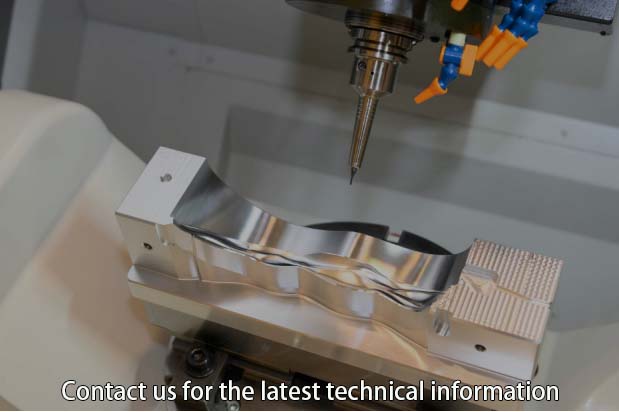
Machining history began with manual lathes and mills. A lathe spins a workpiece. Tools shape the spinning piece. Mills, on the other hand, rotate cutting tools. Workpieces remain stationary.
Then came computer numerical control (CNC) technology. CNC machines use digital commands. These commands control tool paths precisely. Large CNC Machining further expanded capabilities.
Such machinery can handle big, robust materials. G-code provides the instructions. Axes like X, Y, and Z guide movement. Spindle speed (RPM) and feed rate (IPM) are critical parameters.
Tool changers save time during processes. Innovations continue, making fabrication efficient.
Accuracy has now reached unparalleled levels. CNC technology has truly transformed industry practices. By understanding these machines, better product outcomes become achievable. Remember, the right tool choices dictate the quality of the final product.
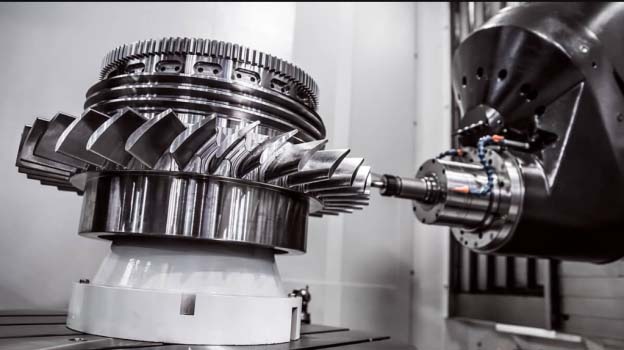
CNC, short for Computer Numerical Control, revolutionized machining. Traditional lathes require manual control. By contrast, CNC machines employ computers for precision. Lathes shape materials by turning them. Milling machines, on the other hand, cut objects with rotating tools.
Both can operate under CNC. In the 1940s, John Parsons introduced punched cards for machine control. Later, in the 1960s, CAD (Computer-Aided Design) began enhancing CNC accuracy. With CNC, error rates plummeted.
Nowadays, machine shops favor CNC for quality and efficiency. The spindle speed, feed rate, and tool path— parameters crucial for machining—get optimized. Such advancements bolster productivity and product uniformity.
Every modern industry, from aerospace to automotive, values CNC's unmatched precision. Truly, the evolution from manual lathes to CNC showcases the pinnacle of technological growth in machining.
The spindle holds cutting tools during operations. In large CNC machining, the spindle's RPM determines cutting speed. In lathes, the spindle rotates the workpiece. However, in mills, the spindle rotates the tool. Its speed, measured in RPM, ensures precise cuts. Proper spindle maintenance prevents machine downtimes.
Machines move in different directions, known as axes. CNC machines often use three main axes: X, Y, and Z. Lathes rotate workpieces, focusing on the Z-axis. Mills, on the other hand, use X, Y, and Z to shape materials. Understanding each axis's movement guarantees precision in machining.
The turret holds multiple tools for quick changes. In CNC lathes, the turret rotates to bring the right tool into action. Unlike mills, which rely on tool changers, lathes use turrets for efficiency. Fast tool changes mean faster production times.
Every machine needs a stable foundation. The bed is that foundation in CNC machines. It supports the workpiece in lathes. In mills, the bed holds the workpiece still. A rigid bed ensures accuracy, especially in large CNC machining tasks.
Instructions guide CNC machines. The controller, a computer, provides these instructions. It interprets a CAD design into movements. Both lathes and mills rely on controllers for accurate operations. Quality controllers result in fewer errors during machining.
Holding the workpiece securely is essential. The chuck performs this task in lathes. It grips the material, ensuring it stays in place. While mills use vises or fixtures, lathes depend on chucks. A reliable chuck ensures safety and precision.
Machining produces heat. Too much heat damages tools and workpieces. The coolant system combats this heat in CNC machines. By dispersing coolants, the system reduces wear on tools. Both mills and lathes benefit from effective coolant systems for prolonged tool life.
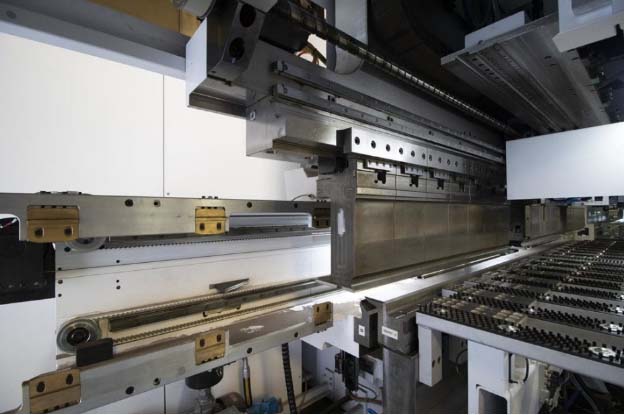
CNC, short for Computer Numerical Control, operates digital machinery. However, the lathe spins materials at high speeds. Milling machines, on the other hand, use rotary cutters to shape surfaces. Clamps secure items during all processes.
Proper clamping ensures precise, safe cuts. Expert machinists know the value of sturdy clamps in large CNC machining.
In CNC machining, computers direct machine actions. Meanwhile, lathes work by rotating material against cutting tools.
Mills, conversely, use rotative tools on stationary material. Vices, crucial in all methods, stabilize pieces for accurate operations. Industry standards highlight vice importance in big scale production.
CNC involves computer-controlled cutting. Lathes, by rotating material, create symmetrical objects. Mills focus on surface cutting.
Using chucks helps maintain workpiece stability. Reliable chucks promote error-free results in large-scale operations. Precision always requires top-notch chuck usage.
CNC employs computerized commands. Lathes turn materials, achieving cylindrical shapes. Mills have cutters shaping workpiece surfaces. Magnetic plates hold parts without physical clamps. Optimal hold means precision. In big CNC operations, magnetic plates play a pivotal role.
While CNC uses computer guidance, lathes revolve materials for desired shapes. Mills utilize rotary cutters on stationary items. Vacuum tables suction and stabilize materials. Vacuum force secures items during milling. Such tables enhance safety, accuracy in large CNC processes.
CNC devices follow coded instructions. Lathes, in contrast, rotate materials for cuts. Mills employ cutters for material shaping. Jigs guide the cutting tools. Exact cuts come from jigs' guidance. Large CNC machining often requires jigs for complex tasks.
In CNC, computers lead cutting tasks. Lathes rotate, making symmetric designs. Mills use rotary tools on fixed materials. Rotary tables enable multiple angle operations. For diverse cuts, rotary tables prove indispensable. In large CNC machining, these tables optimize versatility.
CNC, short for Computer Numerical Control, directs machine tools using coded commands. Unlike a lathe that spins material against a cutting tool, a mill uses rotating tools to remove material.
Trochoidal milling, often applied in Large CNC Machining, employs circular tool paths, ensuring effective metal removal with lower tool wear.
High-feed milling optimizes shallow depths with higher feed rates. In contrast to the rotating action of lathes, mills carve intricate parts with precision. Efficient for rapid material removal, CNC mills, with high-feed strategies, deliver premium finishes.
The dynamic motion, vital in CNC technology, adjusts tool paths real-time. Lathes rotate; mills move the tool. This motion allows superior adaptation to material inconsistencies, granting impeccable finishes in Large CNC Machining.
A ramp-down approach descends the tool into work material at an angle. Lathes are limited to surface contact; mills like CNC machines can plunge into materials. Implementing ramp-down ensures smoother entries, reducing tool stress.
Helical interpolation involves a tool moving in helical paths. Unlike lathes that work on the material's outer surface, CNC mills can create internal features. Such helical methods craft accurate holes without the need for specialized tools.
Chatter, the oscillation in machining, affects tool life and finish quality. While lathes maintain constant material contact, milling, especially CNC, faces this challenge. Techniques to dampen chatter ensure consistent, high-quality results.
Light cutting emphasizes swift, shallow passes. While lathes cut deep but slow, mills, guided by CNC, enable rapid surface skimming. This method prolongs tool life, reduces heat, and produces excellent finishes.
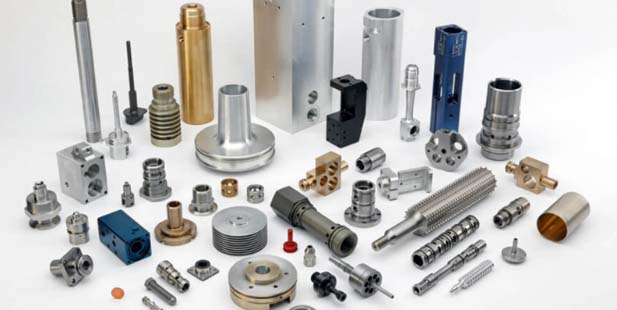
Large CNC Machining, aluminum alloys rank high for their light weight. Such alloys offer high-speed machining. In aerospace industries, 6061-T6 and 7075-T6 alloys dominate. For optimal results, employ high-speed end mills and employ proper chip evacuation.
Stainless steel, notably grades 304 and 316, offers resistance against corrosion. Its toughness requires precise tool selection. Machinists prefer solid carbide tools for efficiency. Tool paths need strategic planning.
The aerospace and medical sectors value titanium. Grade 5 (Ti6Al4V) sees extensive use. Titanium's strength poses machining challenges. Cooling solutions and slower feed rates ensure tool longevity. Proper tool geometry remains paramount.
Composites, like carbon fiber, have become popular. In aerospace and automotive sectors, composites reduce weight. Machining composites requires diamond-coated tools. Preventing de-lamination stands crucial. Techniques like ramping and helical milling prove effective.
Brass provides ease in machining. Industries value brass for its decorative appearance and electrical properties. High-speed tools achieve smooth finishes. Tool paths should prioritize constant engagement.
Materials such as D2 or H13 are tough. Mold and die industries often utilize hardened steels. Slow feed rates and rigid setups maintain tool integrity. Carbide end mills with specific coatings, like TiAlN, optimize performance.
Polymers like Delrin or PEEK have gained traction. Medical and electronic sectors frequently employ plastics. Sharp tools prevent melting during machining. Climb milling techniques enhance surface finish.
Automotive sectors appreciate cast iron. Grades like gray and ductile cast iron find common use. Cast iron's abrasive nature demands tungsten carbide cutting tools. Dust management systems protect both machines and operators.
|
Material |
Density (g/cm³) |
Machinability Rating |
Strength (MPa) |
Thermal Conductivity (W/m·K) |
Cost ($/kg) |
Corrosion Resistance |
|
Aluminum alloys |
2.7 |
High |
70-700 |
205 |
Medium |
Good |
|
Stainless steel |
8.0 |
Medium |
500-2000 |
16 |
High |
Excellent |
|
Titanium |
4.5 |
Low |
830-1170 |
21 |
Very High |
Excellent |
|
Composites |
Varies |
Varies |
Varies |
Varies |
High |
Varies |
|
Brass |
8.4-8.7 |
High |
345-550 |
109 |
Medium-High |
Moderate |
|
Hardened steels |
7.8 |
Low |
2000-2500 |
50 |
High |
Moderate |
|
Plastics |
0.9-2.2 |
Very High |
20-80 |
0.2-0.5 |
Low |
Varies |
|
Cast iron |
7.2 |
Medium-High |
130-300 |
80 |
Medium |
Poor |
Table on Material Considerations in Large CNC Machining!
In the realm of Large CNC Machining, CAD (Computer-Aided Design) programs are paramount. These programs design parts with precision. With CAD, intricate designs become reality. In the machining industry, programs like AutoCAD, Solid Works, and Fusion 360 dominate.
While CAD focuses on design, CAM (Computer-Aided Manufacturing) is about production. CAM software translates CAD designs into machine-friendly codes. NotableCAM software includes MasterCAM, GibbsCAM, and Tormach PathPilot.
Before real machining, simulation tools predict potential issues. By using these tools, operators spot errors in the toolpath or design.
After the CAM phase, post-processors convert toolpaths into specific codes. Every machine type demands unique codes. These processors ensure machine compatibility, making operations smooth and efficient.
Precision is the key in CNC operations. Toolpath optimization ensures efficient machine movements. Resultantly, saving time, reducing wear on tools, and ensuring optimal part quality.
Mimicking real-world assets, digital twins are game-changers. In the CNC world, these digital replicas monitor, analyze, and optimize operations. They're the bridge between the physical and digital spheres.
With large data sets in CNC, cloud storage is essential. Storing, accessing, and sharing files become easier. Moreover, cloud solutions offer unparalleled security and backup for critical data.
In CNC operations, oversight is vital. Real-time monitoring allows swift reactions to changes. As a result, potential issues get flagged instantly, ensuring uninterrupted operations.
Adaptive control adjusts machining parameters in real-time. During machining, variances can occur. By adapting, these systems optimize performance and ensure consistent quality.
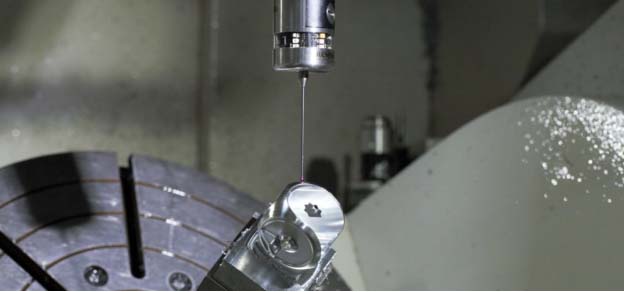
Coordinate Measuring Machines (CMM) scan large parts meticulously. Using a fine-point probe, CMM collects precise data points. These data points ensure dimensional accuracy in Large CNC Machining.
Essential for internal geometries, touch probes detect minute variations. Such probes offer an accurate method of data collection. The probes provide feedback, helping adjust the machining process.
Accuracy remains vital in machining. Laser systems deliver high precision in dimensional checks. Laser beams measure parts, calculating exact sizes and shapes.
Not all tests need advanced tech. Sometimes, skilled eyes detect discrepancies. Trained professionals look at parts, noticing errors or imperfections.
A smooth finish proves vital. Measuring devices, like profilometers, check the surface quality. They detect rough or uneven areas, ensuring a perfect finish.
Large CNC Machining demands exactness. Gauges and specialized tools check if parts fall within set tolerances. Tight tolerances often range from 0.0001 to 0.005 inches.
Heat alters metal dimensions. In Large CNC Machining, temperature effects get managed. Machines auto-adjust, compensating for thermal expansion or contraction.
Some tests risk damaging parts. Non-destructive methods, such as ultrasound or X-ray, offer safe checks. They reveal internal flaws without harming the component.
Transitioning into large-scale machining present’s unique challenges, one is vibration issues. Machine tools, when operating on massive parts, encounter resonance.
Such resonance can compromise the precision of the cut, thereby affecting product quality. Proper tuning and machine setup are imperative to counteract these vibrations.
In large CNC operations, tool deflection becomes evident. Due to the extended reach of tools, deflection happens. Consequently, the machined part might not meet desired dimensions. Calibration and opting for robust tools help alleviate this.
Heat poses significant challenges in large CNC machining. Friction between the tool and the workpiece generates excessive heat. Over time, heat can deteriorate the machine's efficiency.
Cooling systems and lubricants become crucial in such scenarios to protect both the machine and the workpiece.
Securely holding a large workpiece presents issues. Conventional clamps and fixtures might prove inadequate for bigger parts. Employing specialized holding solutions ensures stability throughout the machining process.
Wear and tear is amplified in large CNC machining. Constant operation, especially with harder materials, accelerates the wearing out of components. Regular maintenance and inspection play a pivotal role in prolonging machine lifespan.
Larger parts often require intricate geometries. Achieving these shapes with precision requires advanced tools and experienced technicians. Often, multi-axis CNC machines are employed to handle such complexities.
Large workpieces, especially those made of metals, can deform due to internal stresses. Such deformations can result in inaccurate machining. Pre-treatment of materials, including annealing, can help in reducing these stresses.
Lastly, as the scale of the project increases, so do the demands on the software. Not all CNC software can handle the complexities of large-scale operations. Thus, selecting the right software, capable of intricate operations and detailed simulations, becomes paramount.
Routine checks extend machine lifespan. Maintenance schedules, often monthly, detect minor issues. Immediate attention prevents costly repairs later. Change worn-out parts like bearings and belts promptly. Remember, a well-maintained machine ensures precision.
Accuracy is pivotal in Large CNC Machining. Every machine drifts over time. Calibrate machines often using industry-standard methods. Laser calibration equipment, for example, provides high precision. Accurate measurements enhance product quality.
Before full operation, test the toolpath. Simulate tool movements with specialized software. Detect and rectify potential collisions. Toolpath verification eliminates costly mistakes. An optimized path results in superior products.
Friction causes wear and tear. To counteract, employ appropriate lubrication methods. Use quality lubricants, specific to CNC needs. Consistent lubrication schedules ensure smooth operation. A well-lubricated machine minimizes downtime.
Heat affects machine accuracy. Coolants control temperature during operation. Liquid coolants, like oil-based or water-soluble ones, maintain optimal temperatures. Efficient thermal management ensures dimensional accuracy.
Knowledgeable operators make a difference. Invest in comprehensive training programs. CNC technicians need to understand machine intricacies. Proper training mitigates potential errors. A skilled operator maximizes machine output.
Safety remains paramount. Always adhere to industry safety standards. Before operation, ensure the workpiece is secure. Double-check tool alignments. Safety measures prevent mishaps. A safe environment promotes consistent quality output.
Large CNC Machining is paramount in modern manufacturing. Understanding its components, materials, and best practices elevates the quality of production. Mastering techniques and addressing challenges ensures precision and efficiency. For top-tier CNC solutions, consult CNCYANGSEN.